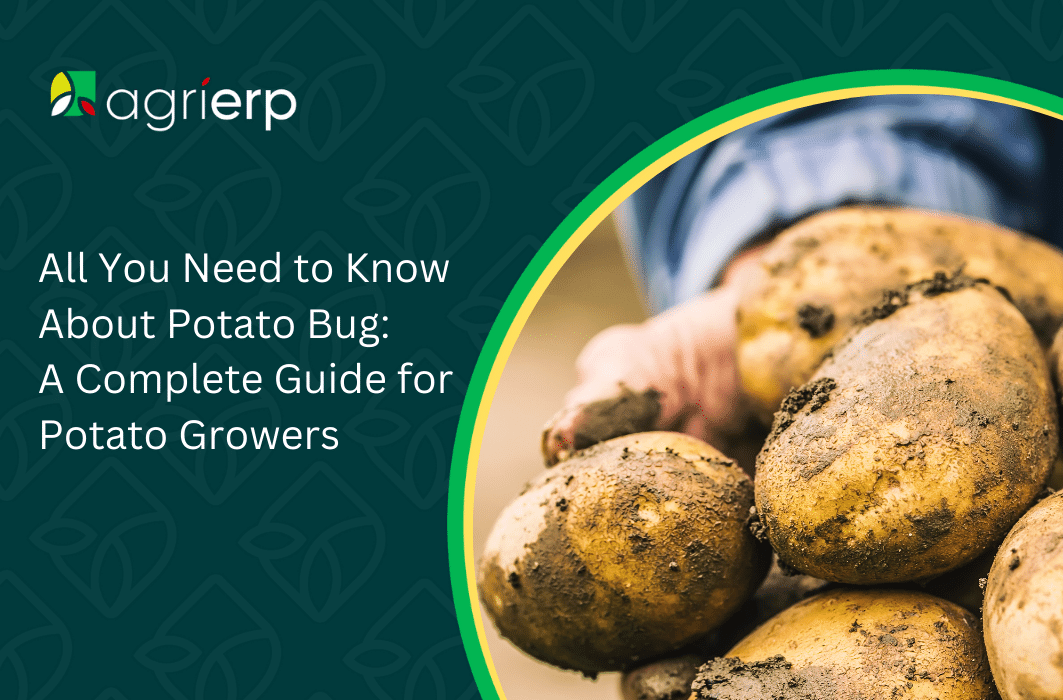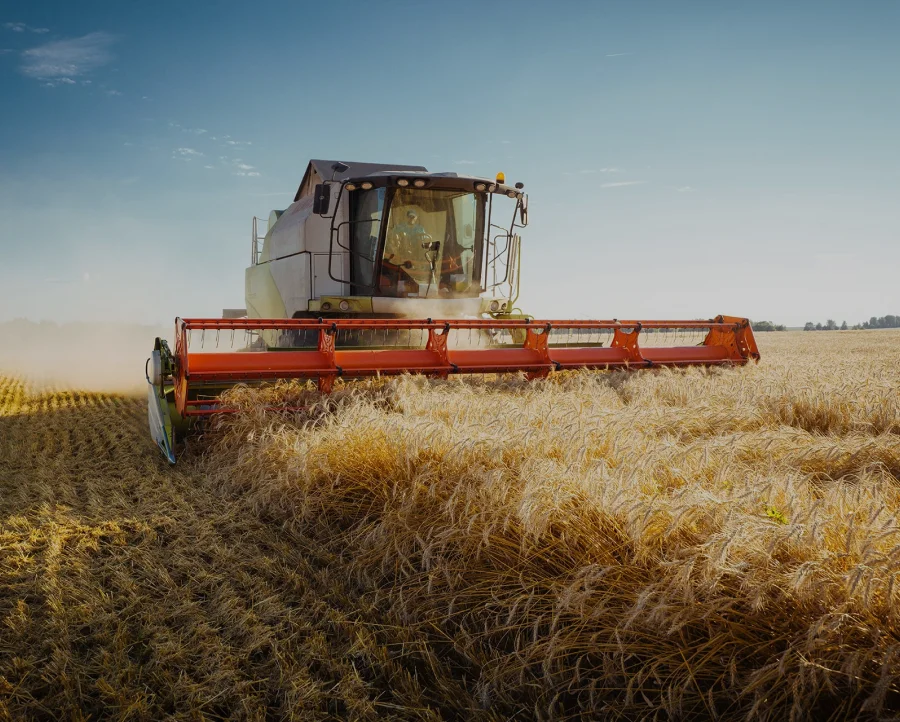Introduction
The Importance of Potato Cultivation
The potato is a staple crop worldwide that is high in nutrients and demand. Food lovers worldwide crave food with savory potato as the main or side ingredient!
Potatoes are also used in various ways, which is why they are a highly valued crop for farmers. They make an immense contribution to the agricultural economy. Moreover, potatoes are an eminent crop for potato processors, as they provide them with beneficial returns.
Understanding the difficulties involved in growing potatoes, such as controlling pests, is necessary for potato growers to maintain good harvests. Potatoes are also essential to potato processors since they may be processed into various goods, including fries and chips.
Introduction to Potato Bugs
Potato aphids, flea beetles, and bugs, including the famous Colorado potato beetle, are frequent pests that significantly threaten potato harvests. Understanding the traits, habits, and effects of these pests on your crops is crucial for managing and avoiding them.
Potato bugs are especially harmful in areas such as California, where the environment promotes their multiplication. Protecting your crops requires efficient control techniques, such as potato bug spray.
Understanding Potato Bugs
Biology and Life Cycle
The life cycle of a Potato bug consists of several stages, from egg to adult.
The Colorado potato beetle, for instance, lays eggs on the underside of leaves. These eggs hatch into larvae, feeding on potato plants before becoming adults.
Understanding these stages helps the farmers adopt a proactive approach and anticipate and manage infestations more effectively. Potato bugs have high reproductive rates, and early intervention is vital to prevent them before their population grows out of control.
Identification
As they say, prevention is always better than cure. Therefore, early intervention is excellent for controlling the bug manifestations that may get out of control. However, the detection depends on the ability to identify potato bugs.
While potato aphids are tiny, green, and have wings, Colorado potato beetles are yellow-orange with black stripes. Little, black flea beetles puncture leaves with small, circular holes. Observing these visible symptoms and indications, such as leaf yellowing or decay, might assist you in the early detection of an infestation. Certain kinds of potato bugs in California may have distinctive characteristics. Thus, local knowledge is helpful.
Impact of Potato Bugs on Crops
Damage Caused
Potato bugs are a serious threat to your crops as they might suffer serious harm.
The Colorado potato beetle’s larvae and adults can remove leaves from plants. This drastically decreases the photosynthesis process and weakens the plant.
Potato bugs may adversely affect potato harvest and quality, perhaps resulting in large financial losses. Decreased quality can harm the end product’s marketability and cause financial losses for potato processors.
Symptoms of Infestation
Initial signs of potato bugs in the crop may include small, round holes in leaves, yellowing or wilting foliage, and visible bugs on plants. Continuous monitoring and search are essential to spot bugs.
Checking the underside of leaves and using traps can help in early detection and control. Using consistent scouting techniques ensures that you identify and control infestations early. This will minimize damage. In regions like California, where potato bugs can thrive, constant and vigilant monitoring is vital.
Prevention and Control Methods
Cultural Practices
Some traditional methods to prevent and control potato bugs exist. Intercropping and crop rotation can disrupt potato bugs’ life cycles. Properly preparing the soil and scheduling planting can also reduce insect populations.
These cultural practices serve as the first line of protection against potato pests. Rotating your crops prevents potato bugs from becoming established in your fields permanently.
Biological Control
The number of potato bugs can be controlled by predatory insects such as ladybugs and parasitic wasps. Bacillus thuringiensis (Bt) and other biological insecticides target and kill pests without harming beneficial insects or the environment.
By allowing these predators to inhabit your fields, you may maintain a natural equilibrium and reduce the need for chemical treatments.
Chemical Control
Chemical pesticides, such as potato bug spray, must be used as a last resort. If absolutely necessary, choose pesticides designed explicitly for potato bugs and follow the application guidelines carefully to avoid overuse.
Although several potato bug spray options exist, secure use and effectiveness must always be prioritized.
In California, where pesticide usage is strictly regulated, choosing safe and efficient sprays is crucial for compliance and safety.
Integrated Pest Management (IPM)
Integrated Pest Management (IPM) is a complete technique that combines chemical, biological, and cultural treatments. This method promotes sustainable and efficient pest management by reducing the need for chemical pesticides. By safeguarding the environment and your crops, integrated pest management (IPM) ensures the long-term sustainability of agriculture. Using IPM can improve the safety and quality of potato processors’ harvests.
Role of Technology in Managing Potato Bugs
Farm Management Software: AgriERP
AgriERP provides a range of features, such as pest control, that will help with farm management.
This program enables effective resource management and monitoring of crop conditions. This technique offers producers and potato processors a significant advantage in adequately managing their pest concerns.
How AgriERP Helps in Pest Management
AgriERPprovides real-time monitoring and reporting about pest activity. Using data analytics, it forecasts pest outbreaks and suggests preventive measures.
Automated reminders for pesticide applications ensure timely intervention. Moreover, efficient resource management helps maintain crop health. This software gathers data from various sources, enabling precise and smart decision-making.
Case Studies
Farmers who have used AgriERP have reported huge reductions in insect damage to crops and increased yields. These achievements show the benefits of adopting technology for agricultural operations and how data-driven strategies may improve pest control.
A California case study, for example, showed that farmers using AgriERP were able to reduce pesticide use by thirty percent without compromising the quality of the crop.
Best Practices for Potato Growers
Developing a Pest Management Plan
Developing a pest management strategy includes identifying possible pest risks, constantly monitoring crop conditions, and acting quickly to implement control measures.
The strategy must be updated and modified regularly to properly tackle new issues. A well-organized plan covers every aspect of pest control, from prevention to intervention.
Record Keeping and Data Analysis
Correct and detailed records of pest activity, treatments, and results are necessary. Over time, analyzing this data helps in future decision-making and refinement of pest control strategies.
Maintaining accurate records enables you to monitor the effectiveness of different strategies and make necessary, well-informed changes. Keeping these documents up to date helps potato processors ensure the supply chain is reliable and transparent.
Continuous Learning and Adaptation
It is always a good idea to stay updated with the latest research on potato bugs and pest management techniques. Adapting to new technologies and methods ensures that your practices remain effective and sustainable and keeps you competitive in the market.
Attending workshops and interacting with agricultural extension services can offer valuable information and updates on the latest best practices.
Conclusion
Understanding potato pests and implementing appropriate management techniques is crucial to maintaining healthy potato crops. Technology may greatly improve pest control operations. One example is the use of farm management software like AgriERP. Integrating modern technologies with conventional approaches gives a strong foundation for managing pests.
Encouragement for Growers
By following best practices and staying informed, you can effectively manage potato bugs, thus achieving healthier crops and better yields. The future of potato cultivation looks highly promising with the adoption of advanced management techniques and sustainable practices.
Adopt these up-to-date methods to protect your crops, make your processes efficient, and ensure the long-term success of your potato farming.
With this all-inclusive article, potato processors may effectively and successfully tackle the issue of potato bugs. This will guarantee them a flourishing and abundant crop. Put the suggestions above into practice and maintain a vigilant eye to keep these recurring pests away from your precious potatoes.
Doing this protects your crop and will lead to sustainable farming methods that benefit the environment and the larger farming community. Moreover, food lovers will continue to enjoy delicious potato dishes forever!








